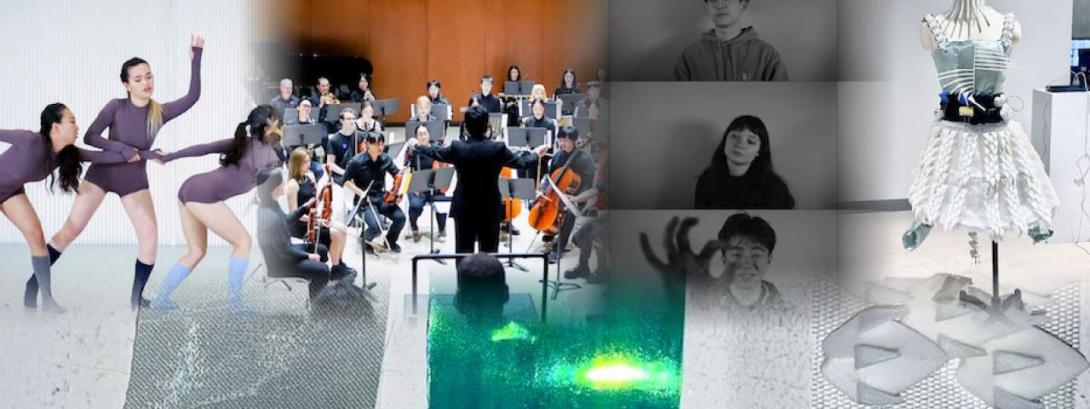The end of every semester is marked by a grand finale of events, exhibitions, and performances showcasing NYU Shanghai students’ efforts. But unseen behind every moment in the spotlight are the hours of rehearsals, rounds of editing, and collaborative discussions with classmates.
Student creators who took part in dance, music, visual arts, and interactive media arts shows on campus to mark the end of their semester-long studies share stories of their creative process and what it takes to create meaningful works across disciplines.
Leyla Bevis-Mast ’25, Dancer | Spring Dance Concert
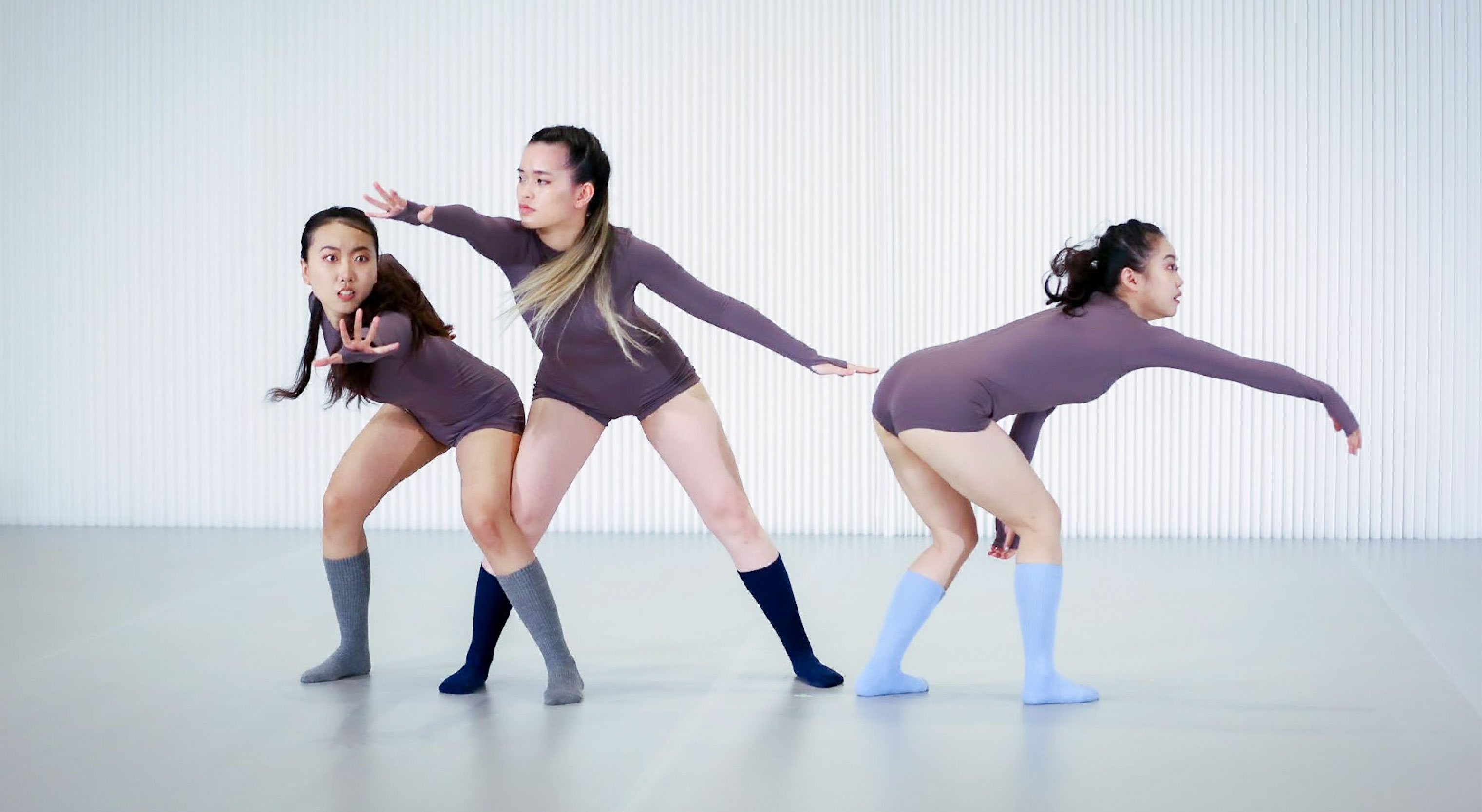
From: Seattle, Washington, USA
Major: Global China Studies
Class: Choreography and Performance
Instructor: Assistant Arts Professor of Dance Zhao Yuting
Performance: “The Soul Has Three Faces”
What is unique about the Choreography and Performance class?
Our professor gave us complete creative freedom over the choreographic process, and we collaborated in small groups. It was less about getting in a certain number of turns or [making] your leaps to a certain height and more about how to move with your teammates and how to create and explore interesting shapes and relationships through dance.
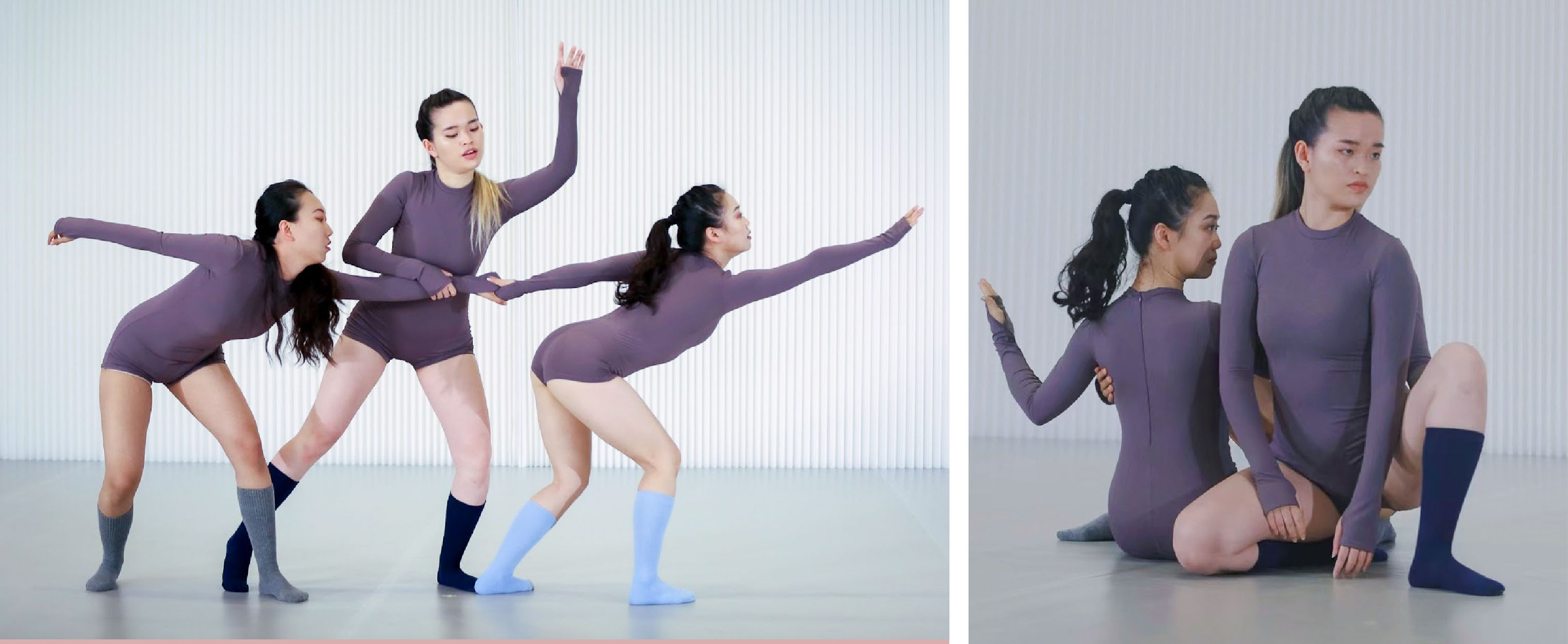
Is it difficult to create a group choreography?
The prompt that our professor gave us was to start the process with what message we wanted to convey rather than what type of movement we wanted to do. Our group landed on this idea of, ‘What would it look like to represent one individual but have each of us be a different side of that individual?’ It was definitely challenging, but the outcome was nice because I feel like our dance really contained all of our ideas. We also learned how to gently give each other constructive feedback.
What kind of work goes into practicing in and outside of class?
In class we would do traditional dance exercises, warm up the feet and body, and do some across-the-floor techniques. We also did improv exercises to get us to start to move in our own bodies in the way that we wanted to. We devoted about four hours every week outside of class to choreograph our dance. I had a large hand in choreographing the beginning part and would listen to the music for cues on how our movements might reflect subtle changes.
How did you adjust to any challenges?
One of the girls got sick a week before our performance and wasn't able to perform with us, so we were making changes up to two days before the performance. We even had to change the title from “The Soul Has Four Faces,” to "The Soul Has Three Faces.” In the end, it worked out!
What was it like to perform and watch your classmates?
It was very powerful. To perform something that you took part in creating and to have a really positive response from the audience is very validating. One of the girls in our group mentioned being able to feel our breathing in sync during our dance, and that kind of connectedness with my teammates felt like it was the three of us against everybody else. Watching someone move the way that they want to move is really different than watching someone move the way someone else wants them to move. I could see and feel this confidence coming out in all of my classmates because maybe they were moving how they naturally like to move, or sharing an idea that they're proud of. Being able to see my classmates really shine like that was beautiful.
Grace Tan NYU ’25, Cellist | Spring 2023 End of Semester Concert
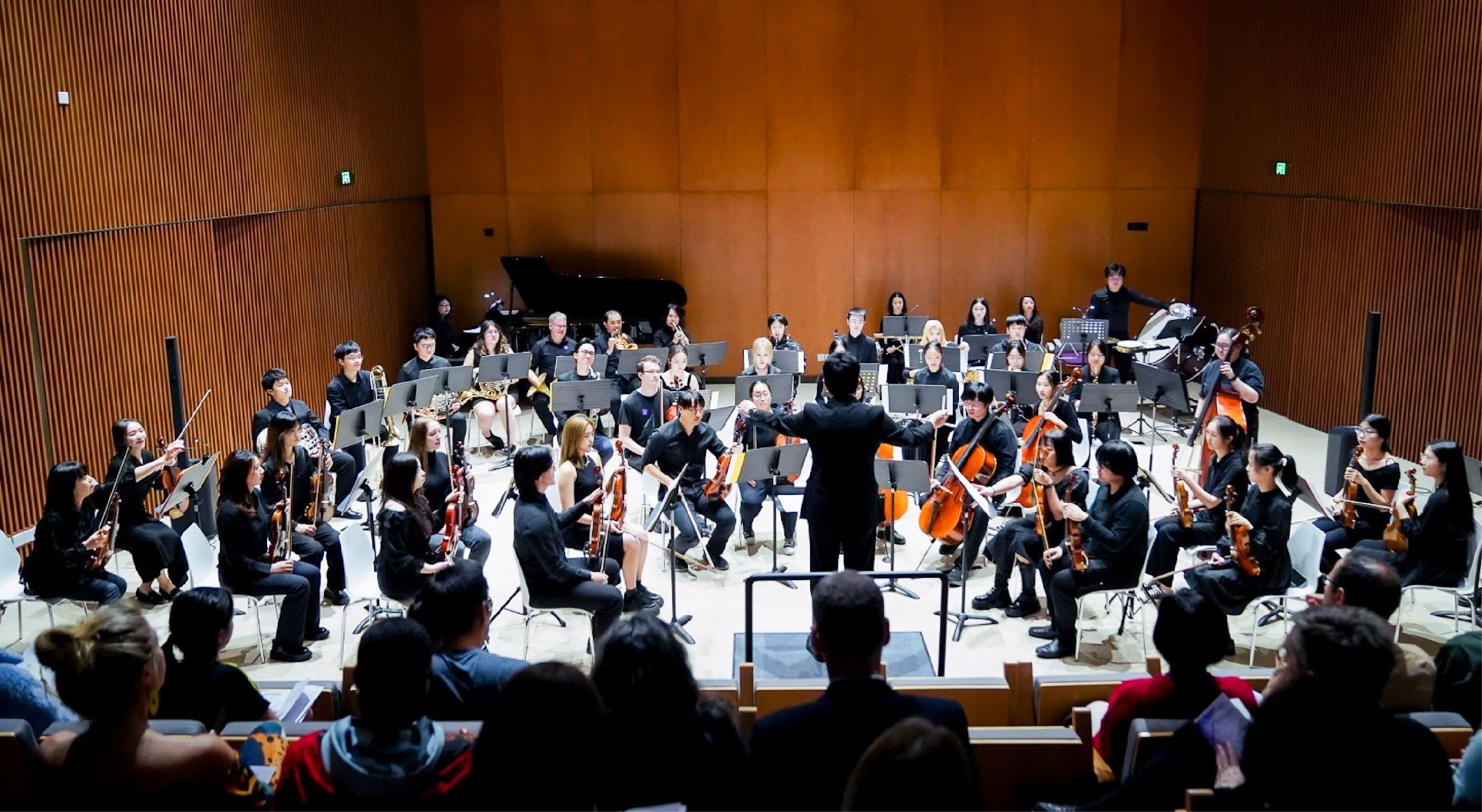
From: Troy, Michigan, USA
Major: Media, Culture, and Communications
Class: NYU Shanghai Chamber Orchestra
Instructor: Area Head of Performing Arts Cheng Yue
Performance: The Florentiner March by Julius Fucik, arranged by RJ Hume, Annen-Polka by Johann Strauss, Merry-Go-Round of Life by Hisaishi Joe, arranged by Yue Cheng, The Dance of Yaos by Yuan Mao and Tieshan Liu.
When did you join the chamber orchestra?
I’m a study away student from NYU in New York, and this semester I was really happy to come to NYU Shanghai and reinvigorate my practicing and passion for music after I joined the orchestra.
What are practice sessions like?
We practice every Tuesday night, but personally I practice outside of class as well just to make sure that I can understand everything. Sometimes the winds or strings siphon off and play together to target specific things. I usually come back to practice on campus after my internship, and I find it’s a great way to relieve stress at the end of the day. It's been really nice to meet a lot of people through orchestra, especially the other cellos.
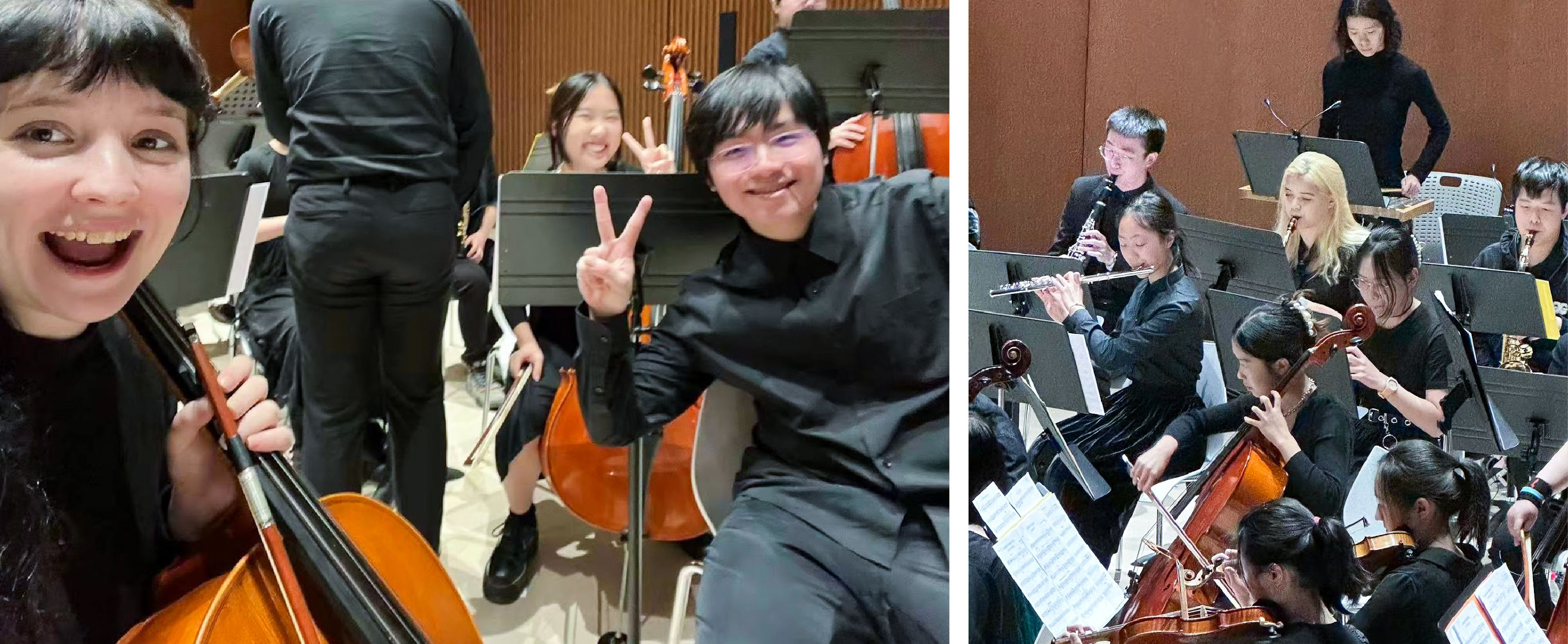
Grace Tan (center) with fellow cello players Regan Slattery (left) and Johnson Wu (right).
What were some of the challenges you faced?
I had to get used to reading music again and keeping up with the group, which was kind of difficult in the beginning. At practice, we would just sight-read and start playing, building on changing up the tempo or adding in different dynamics over the semester. Having the music down and getting to a point where you feel comfortable in order to perform well was the most difficult part. I practiced in the dorms, and on other days when I was on campus late, I would practice in the basement-level music rooms. It was a semester-long effort to get to where we are now.
What is it like to perform with the orchestra?
In an ensemble, it's important to be aware of your surroundings and keep in tune with the conductor’s signals and what the rest of the orchestra is signaling to you. Cello tends to be less melody and is more of a backing instrument, so it was very important for us to keep tempo and make sure that we weren't throwing off the balance. I sat right next to the double bass [players] who also kept the tempo, so I had to keep in line with them.
What was most memorable about the experience?
My mom actually came to watch and so did a bunch of my other friends from school, so it was really nice to see them in the audience and feel that people cared. After our performance, we got to debrief over bubble tea and watch the other performances, which was really fun.
Will you keep playing cello when you return to New York in the fall?
I think when I go back, I'll see if there are people who want to make an ensemble or see if I can play at different gigs, just for practice. Watching the NYU Shanghai Jazz Ensemble actually inspired me to see what other genres cello can be used in, beyond classical music.
Mateo Rengifo Orozco ’25, Filmmaker | Moving Images I Student Screening
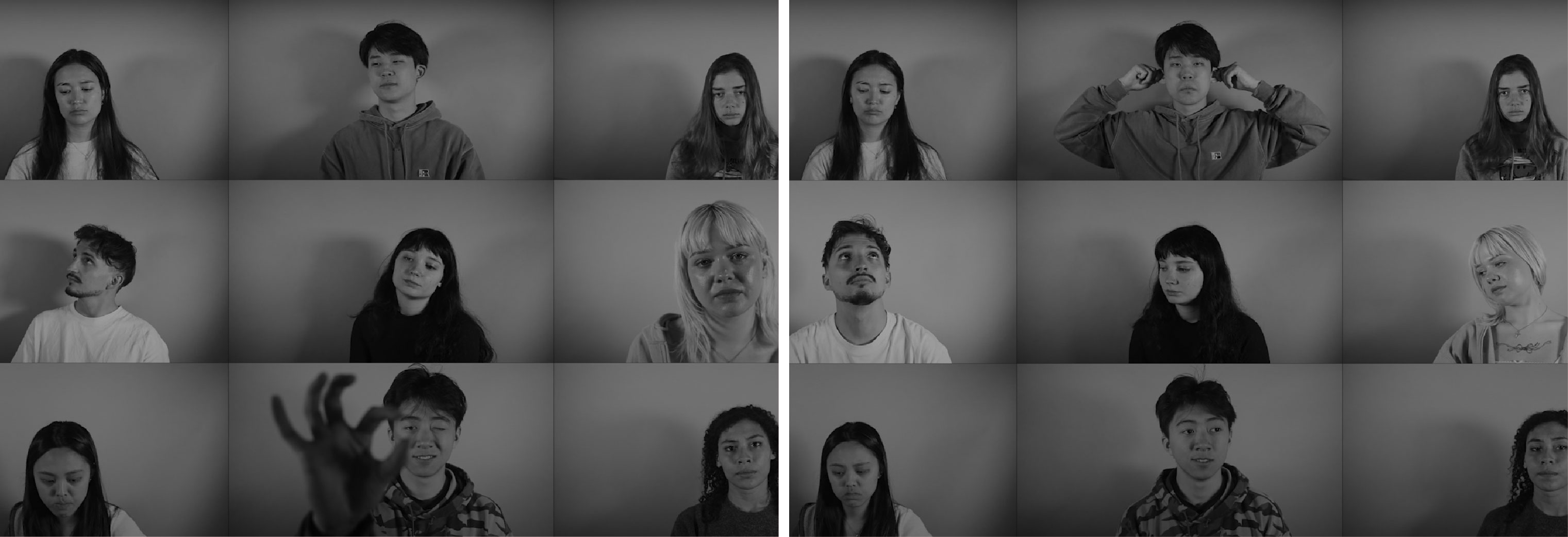
From: Bogota, Columbia
Major: Business and Finance
Class: Moving Images I
Instructor: Assistant Arts Professor of Visual Arts Alice Wang
Project: I Will Be Back in Five Minutes
Tell us about your film.
My film is in the experimental genre. It shows nine different perspectives set to a story narration. With so much visual and auditory stimulation, what your mind focuses on changes a lot and the interpretation is left to the spectator. What we learned in class is that the mind is really good at connecting what you're seeing with what you're hearing. Since every single person who watches the film is going to focus on a different face at a different moment in time, everyone will have a unique experience of this constant conflict between focusing on visuals or audio.
What was a concept you wanted to explore in your film?
When you take a picture of someone or when you draw a portrait of them, that person always displays themselves in the way that is most flattering, but I think if you record someone for long enough, they’ll show you who they truly are. They start getting jittery, they start getting impatient, and that's when you truly start seeing someone's personality.
How did you go about making this film?
At the Visual Arts Studio, I built my own set using the studio lighting, making sure that every single shot would be uniform. I asked nine of my friends if I could record them for five minutes to capture their raw personality on camera. I gave them each a different emotion to keep in their mind–envy, anger, sadness, love, fear, curiosity, disappointment, joy, confusion, pride, compassion, and disgust–not to act out but to think about. I actually recorded them for 10 minutes, but with the false impression of time, they started to get anxious, which revealed something real about who they were. Then, I edited them all together so they were playing at the same time, set to the narration of "The Gift," a short story by Lou Reed, read by musician John Cale. The story is both funny and a little bit dark, and Cale’s voice is really pleasant. I wanted to play with what the spectator would think about the story.
Conceptually the film took me about two weeks. The editing process took me about two days, but I filmed all of my friends all on the same day and asked them to please not speak to each other. I also didn't let them see any footage until the final screening.
Did you come across any challenges?
Something I found interesting was that everyone, no matter what emotion they were assigned to think about, ended up becoming pensive and sad by the end. One friend started feeling it too much and asked to stop filming. It was such a human moment and showed how powerful memory can be. Her recording ended up being a bit shorter than the rest (all of them were 10 minutes long, hers was eight minutes), so I slowed her recording down to match the others so that it wouldn’t be perceived by the audience.
Has this experience changed your own perception of film and filmmaking?
After this course, I have a deep appreciation for different types of filmmaking that I'd never been exposed to. Our professor would make us sit through movies that otherwise I never would have watched. There was one called Blue, which was 90 minutes of a blue color on a screen with a narration. These days you see Instagram, you see TikTok, and it's like every 10 seconds you see a new video. Sitting down and watching a three-hour movie that can be slow is becoming a difficult thing to do.
Any advice to future student filmmakers here?
I think the university has a lot of spaces and equipment for you to play around with if you're excited about visual arts. Take advantage of it, even if it's not your professor, reach out to the people in these departments, because you will find access to mediums that you wouldn't have access to otherwise. I think it's one of the great privileges of going to a place like this.

From: Shanghai, China
Major: Interactive Media Arts
Class: Interactive Fashion
Instructor: Undergraduate Coordinator of IMA Marcela Godoy
Project: Anicron
By: Johnny Zhou Jiachen ’23, Wendy Tong '23, and Hazel Dai '23
Tell us about your project.
Anicron is an interactive fashion outfit, combining the concepts of animal mimicry and mechanical elements, while also hinting at the idea of transhumanism. The use of an exoskeleton in the outfit suggests a hybridization of human and animal traits, while the tail adds a further nod to the animal kingdom. It expresses defensive and offensive social signals.

What materials did you use to create this?
We mainly used generic PLA to 3D print all the components and have experimented with various kinds of fabrics like feathers and leather.
What inspired your design?
I’m interested in investigating how animal mimicry and either the decoration or the functionality of non-human organs (eg: wings, tails, gills, etc) have reshaped our self-identity and perception over time. Animal mimicry is an important factor in the development of transhumanism as integrating and imitating the actions, behaviors, or even the appearance of certain animal features provides a perspective to think about the potential direction of future human evolution.
It’s becoming trendier for people today to make characters or filters featured with non-human characteristics on social media platforms like Snapchat and it’s considered a new approach to demonstrate self-identity and emotional state. However, historically speaking, this was not always viewed favorably as evidenced by some early religious societies that saw certain types of animal mimicry as ominous symbols linked to evil spirits. Based on this knowledge, I try to integrate animal mimicry with fashion outfits to envision how future human beings will look like.
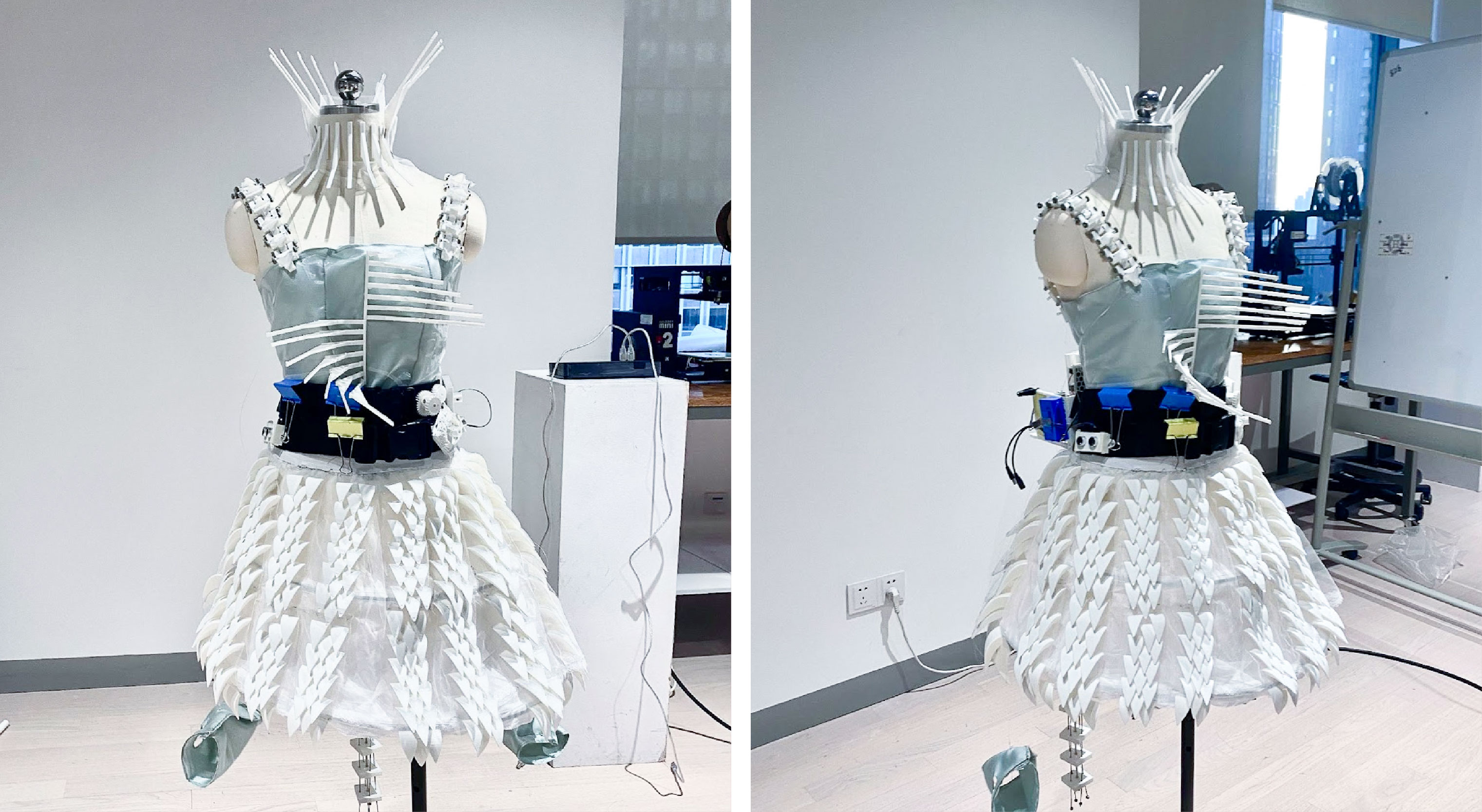
What was the process of creating your work?
It was an iteration process of testing the most suitable mechanical structure and materials for making the outfit and seeing whether it went along with my initial concept. It was really hard to tell the exact moment that my project would be finished. In my case, I spent around half of the semester prototyping, iterating, and polishing this piece.
What challenges did you face?
Making wearables is always more challenging than other regular interactive installations since you need to consider the model's overall body gestures and how the dress will swing following their movements.
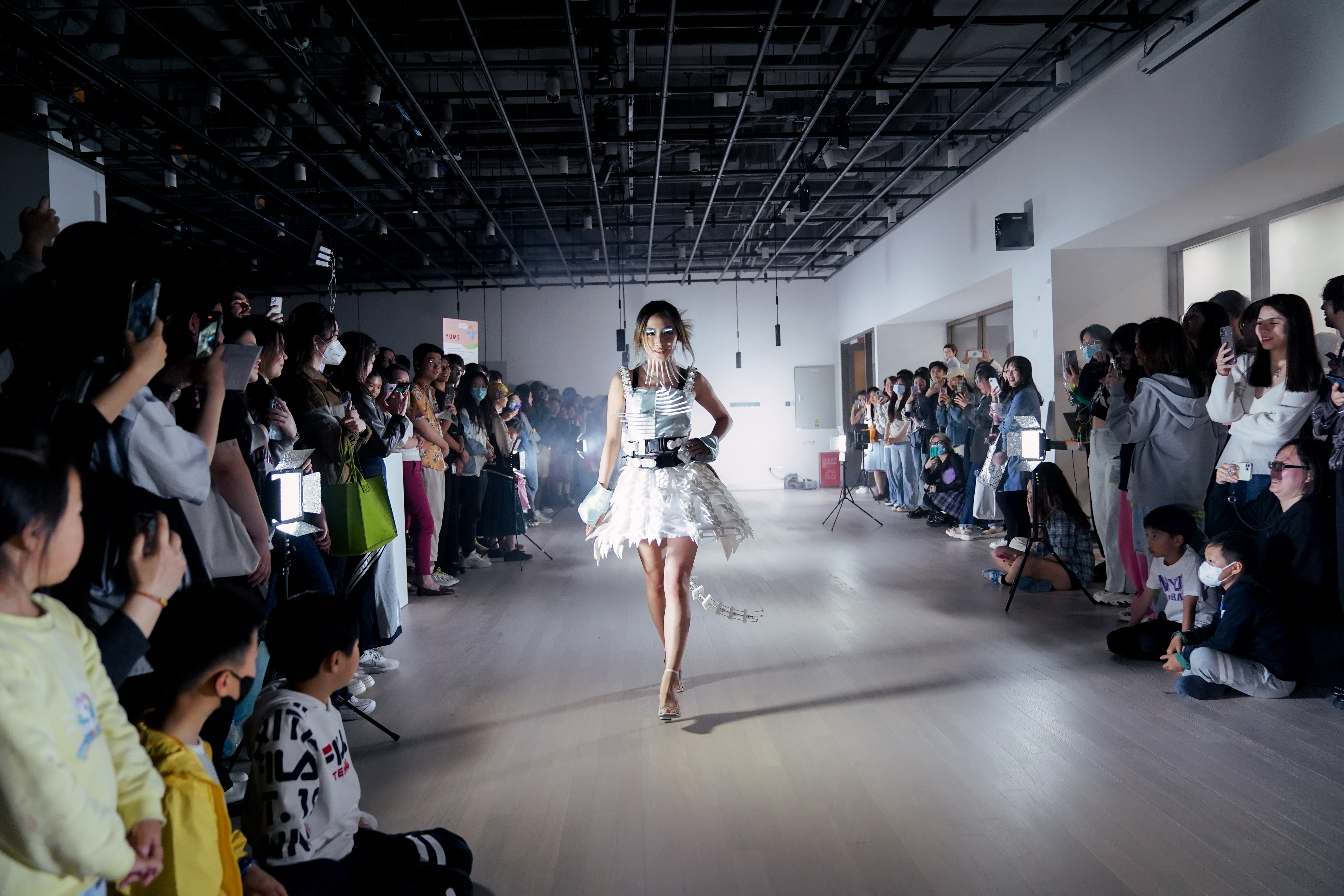
Any advice to other student designers?
Learn by doing. You can always find something new and unexpected during this process.


